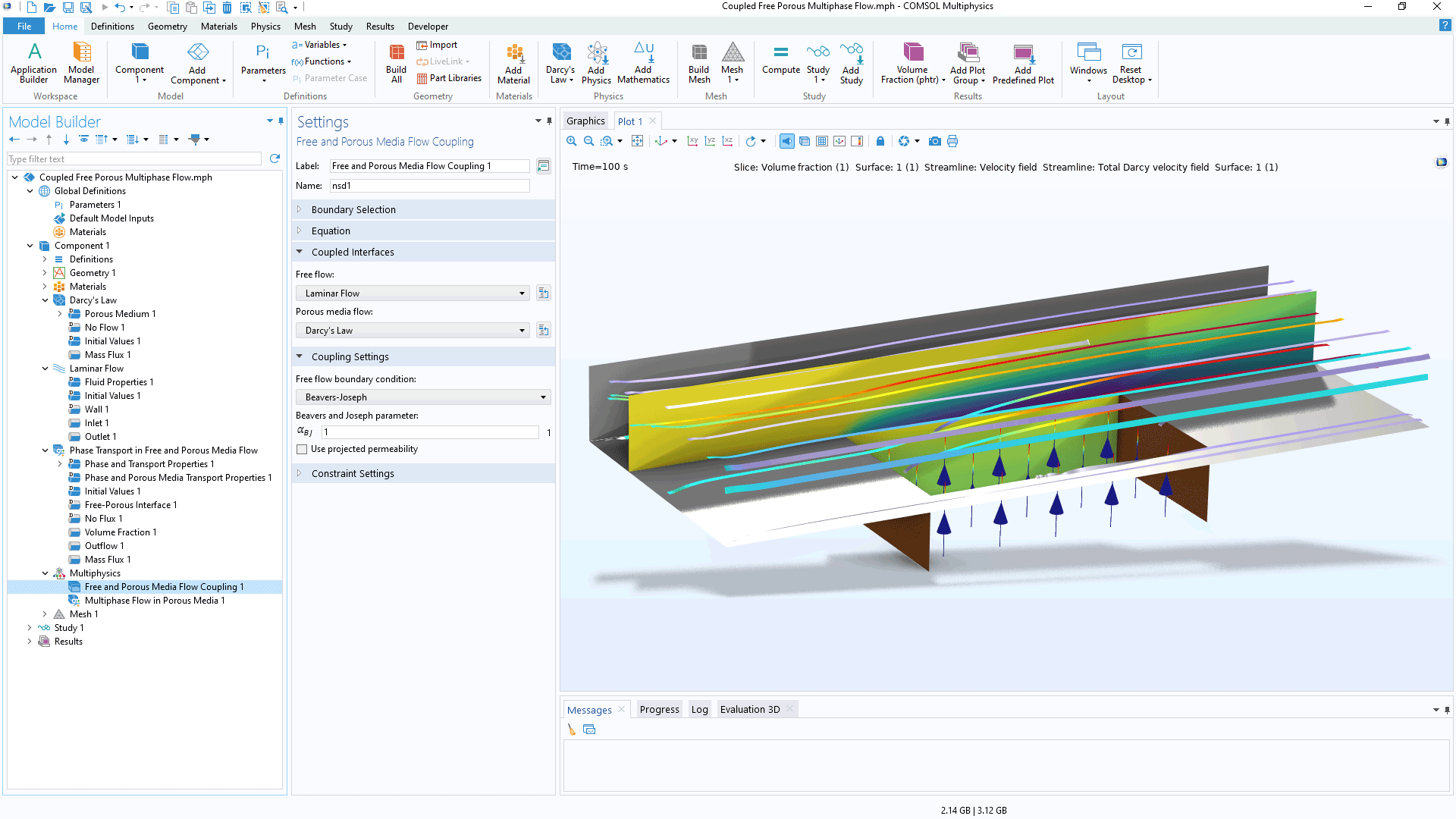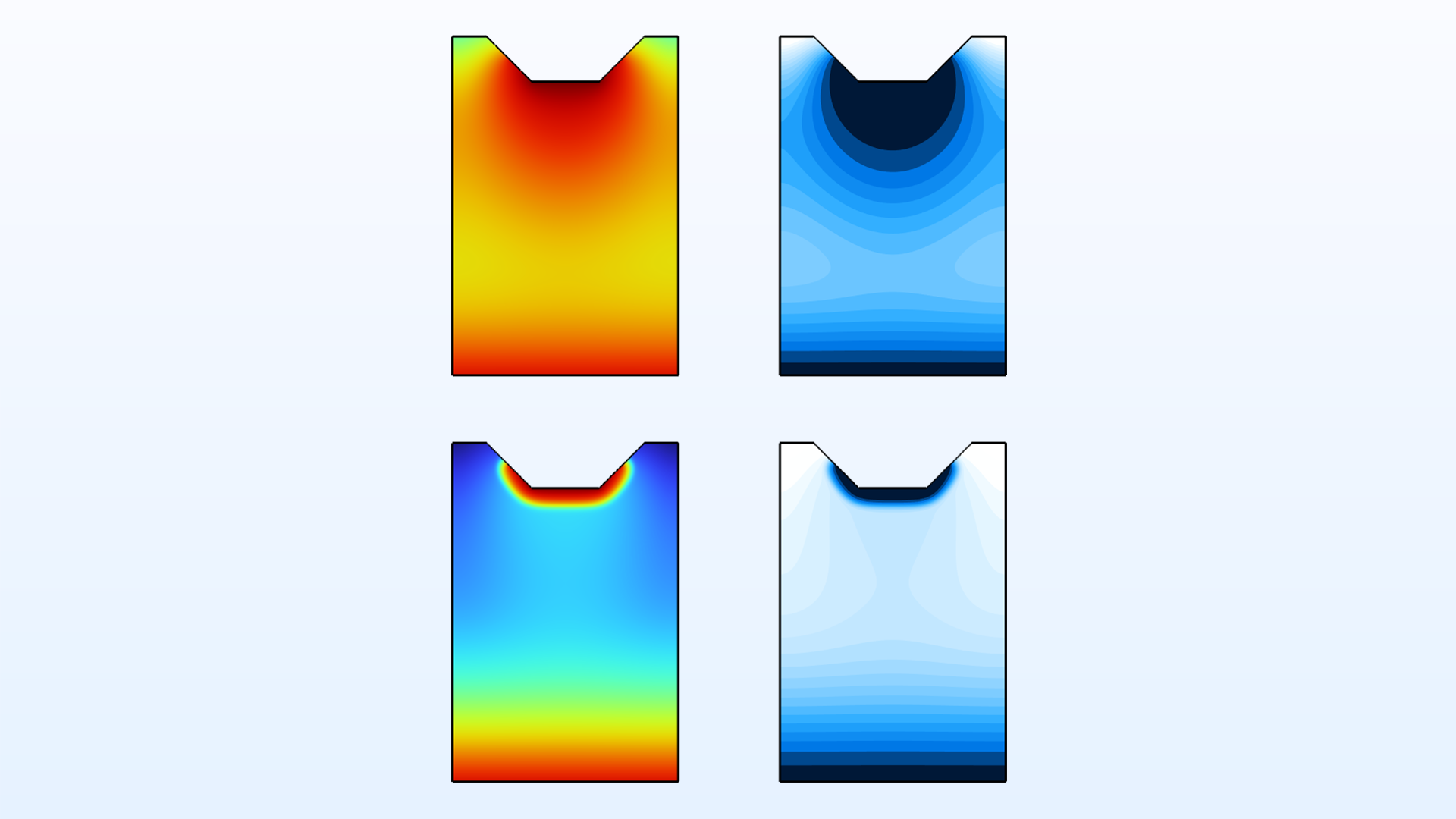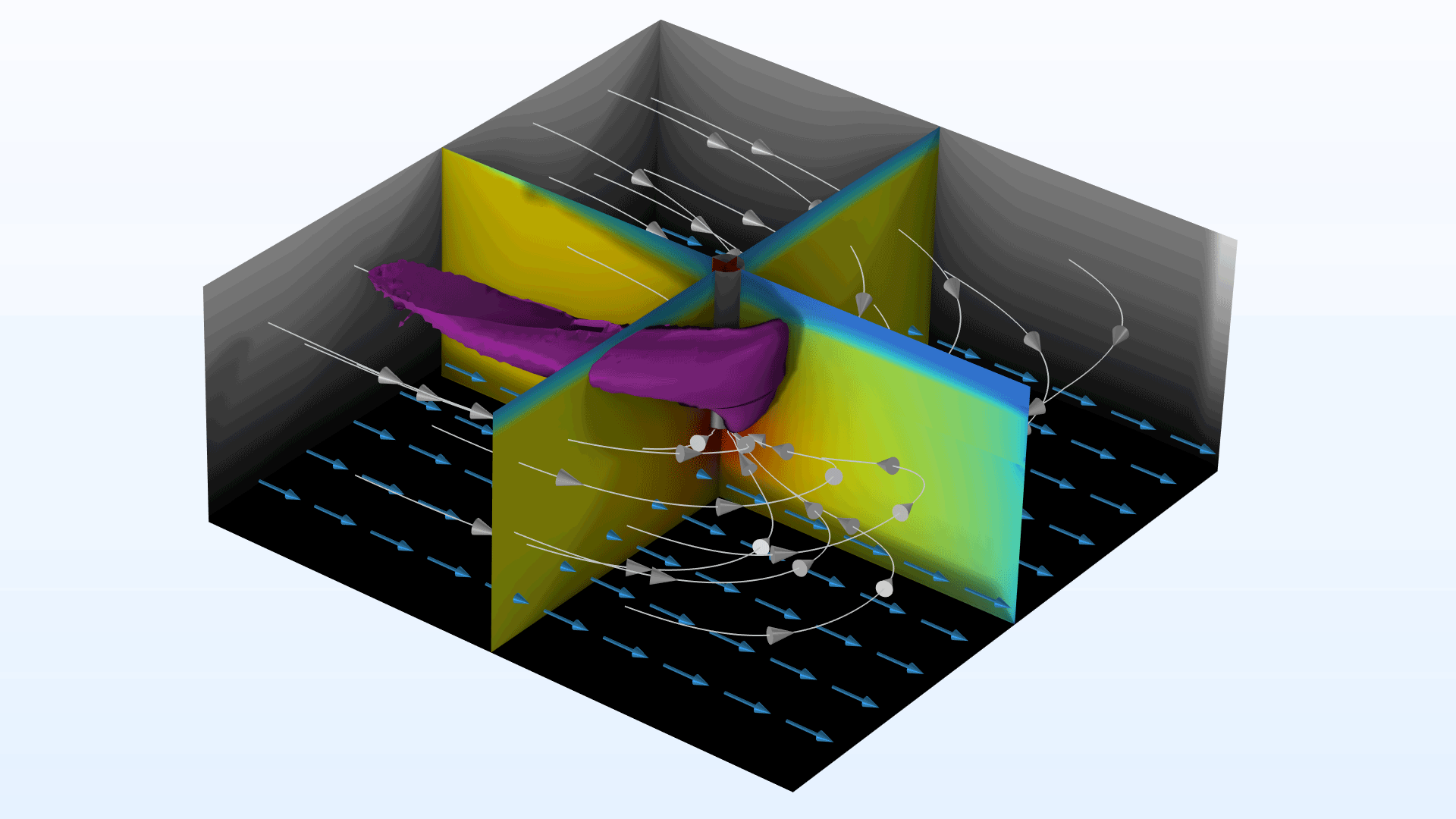support@comsol.com
Subsurface Flow Module Updates
For users of the Subsurface Flow Module, COMSOL Multiphysics® version 6.2 introduces new Dual Permeability Medium and Unsaturated Dual Permeability Medium features, a new Free and Porous Media Flow, Darcy multiphysics interface, and enhancements to the Well operation for predefined global quantities. Read about these updates and more below.
New Dual Permeability Features
There are two new Dual Permeability Medium and Unsaturated Dual Permeability Medium features within the Darcy's Law and Richards' Equation interfaces. These features enable modeling of saturated or unsaturated fluid flow within a dual permeability approach, where two distinct and interconnected porous systems are present. The dual permeability approach can be applied to cases where both porous systems are fully saturated and have varying permeabilities. You can view these new features in the new Furrow Irrigation — Dual Permeability tutorial model.

New Dual Porosity Feature
A new Dual Porosity Medium feature has been added to the Darcy's Law and Richards' Equation interfaces. It can be used to model saturated fluid flow that occurs in interconnected, contrasting porous systems, such as where one porous system possesses significantly larger pores (macropores) and the other possesses smaller pores (micropores). This new feature is used in the new Seawater Intrusion in a Coastal Aquifer tutorial model.
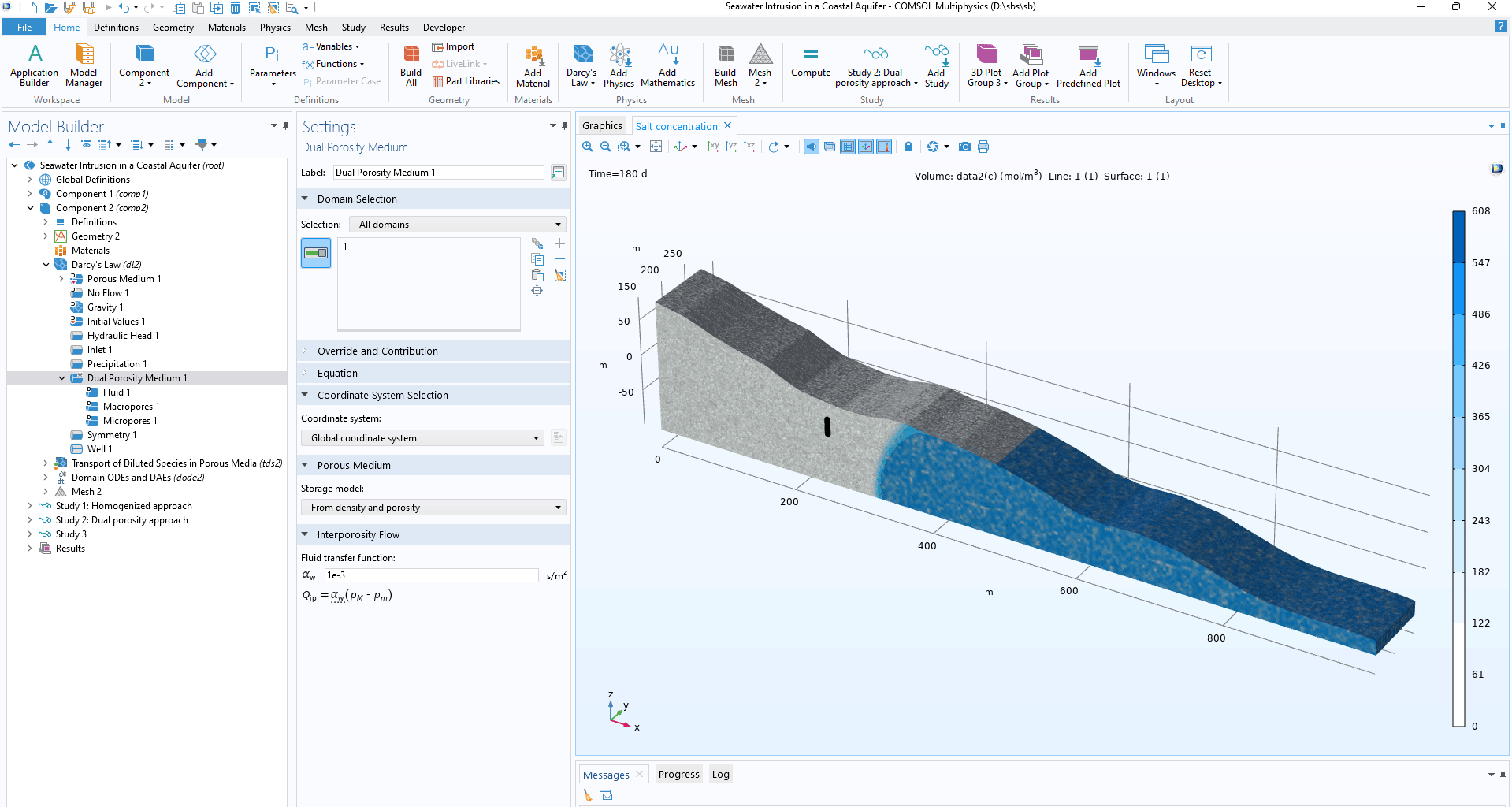
New Interfaces for Coupled Free and Porous Media Flow
There is a new Free and Porous Media Flow, Darcy multiphysics interface that, once selected, adds a Darcy's Law interface, a Laminar Flow interface, and a new Free and Porous Media Flow Coupling multiphysics coupling to the model tree. This multiphysics interface can be used with the new Phase Transport in Free and Porous Media Flow interface to seamlessly model multiphase transport in free and porous media flow. You can see these features in use in the new Modeling Groundwater Contamination tutorial model.
New Density Options
In the Darcy's Law and Richards' Equation interfaces, two new Fluid type options are available in the Fluid subnode of the Porous Medium and Unsaturated Porous Medium features. The Incompressible and Compressible, linearized options have been added, and the previous Gas/Liquid default option has been renamed to Compressible in order to better describe the equation of state used for the fluid.

Additional Velocity Contributions
A new Contributing Velocity option is available for the Porous Medium, Unsaturated Porous Medium, and Dual Porosity Medium features within the Darcy's Law and Richards' Equation interfaces. This new feature allows for external velocity contributions to be added to the Darcy velocity, which can, for example, arise due to the solute concentration gradients in liquid flow or Knudsen diffusion in gas flow applications. The new Modeling Groundwater Contamination tutorial model demonstrates this feature.

New Plots and Variables for the Well Feature
The Well feature has been updated to include predefined global quantities for assessing injection and production rates. Additionally, predefined plots for injection and production rates are now available for time-dependent simulations.
New Option for Weather Station Selection
In the Ambient Properties node, a new Around location option has been added for choosing a weather station based on GPS coordinates. Once the latitude and longitude of a specific location have been given, the feature displays the 100 nearest weather stations using the haversine formula. This simplifies the selection of the closest weather station when a location does not exactly correspond to an existing station.
New Tutorial Models
COMSOL Multiphysics® version 6.2 brings the following new tutorial models to the Subsurface Flow Module.
Seawater Intrusion in a Coastal Aquifer
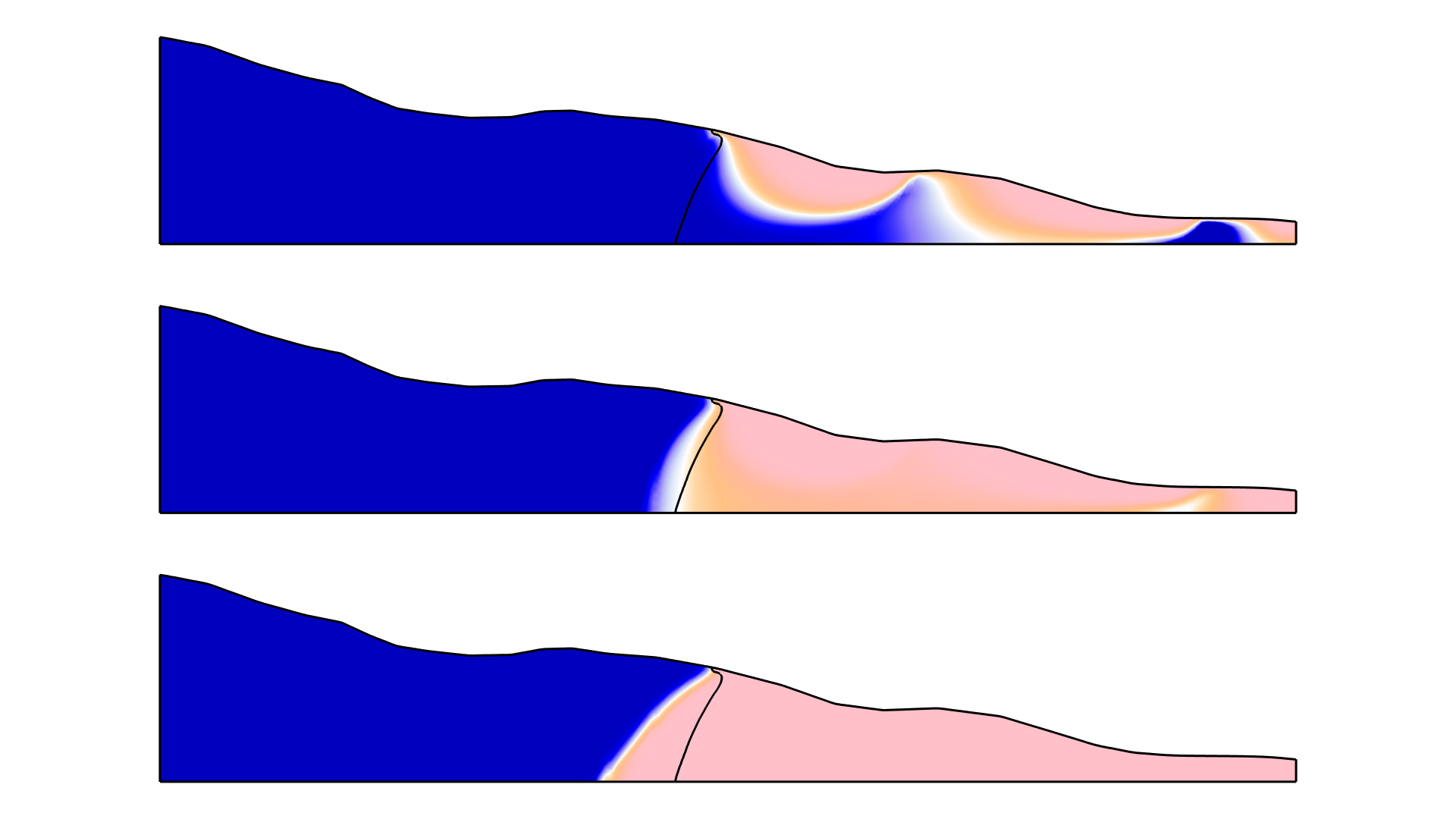
Application Library Title:
seawater_intrusion
Download from the Application Gallery
Furrow Irrigation — Dual Permeability
Application Library Title:
furrow_irrigation_dual_permeability
Download from the Application Gallery
Modeling Groundwater Contamination
Application Library Title:
groundwater_contamination
Download from the Application Gallery

